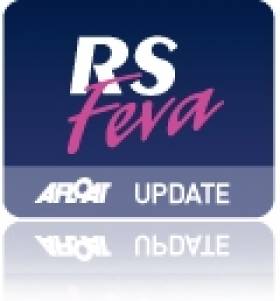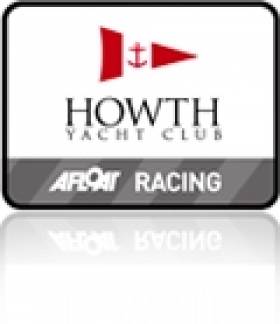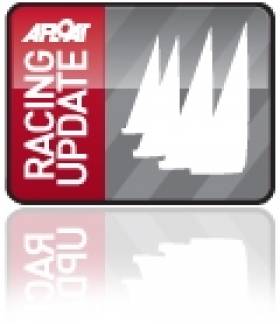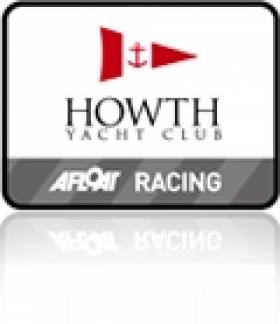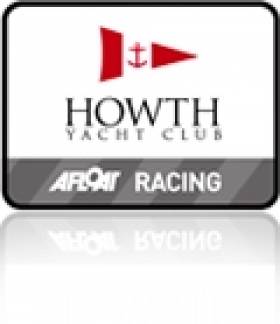Displaying items by tag: Howth
The 162 gross tonnes tug had served a career of nearly three decades in Dublin Port, after entering service in 1972. Prior to working in Irish waters the 100ft tug spent the previous decade operating in the UK as Appelsider for Lawson-Batey Tugs Ltd who chartered her to Tyne Tugs Ltd. For historical record and photos click HERE.
In 1998 the Dublin Port Company disposed of the Coliemore alongside her running mate Clontarf (1963/178grt) the former Cluain Tarbh, also built from the same Yorkshire shipyard on the banks of the River Humber.
Initially they were towed to Liverpool but they later appeared at Cork Dockyard in 1999. The Clontarf remained there for a year until she was sold to Barcazas Dominicia SA, Santo Domingo in the Dominican Republic. For photo of the tug in far distant waters click HERE. It was intended Coliemore would follow her Caribbean counterpart but her sale fell-through.
The vessel's ownership eventually transferred to Cork Dockyard where her scrap value will pay for her long-term berthing fees. The tug recently made her final short journey under tow from her berth at the former Verolme Cork Dockyard (VCD) to the facilities slipway where work to break-up the vessel began.
Coliemore and her fleet-mates were given the traditional naming theme of Dublin Bay coastal suburbs spelt in Irish. The naming policy was used by the Dublin Ports & Docks Board (DP&DB) which operated the fleet remained until transferred to the Dublin Port Company established in 1997.
The last tugs to carry the traditional names, Ben Eadar (Howth), Cluain Tarbh (Clontarf) and Deilginis (Dalkey) are now up laid-up awaiting to be sold, to read more click HERE.
Between the 14-16th centuries Dalkey Sound became increasingly important as larger vessels with deeper drafts could no longer enter the port in Dublin due to the dangers of constantly shifting sandbanks and swallow channels in Dublin Bay.
The nearest alternative was for vessels to anchor off Dalkey Island and in the relative shelter of Dalkey Sound where cargoes for the capital where transferred to and fro by lighters to the coastline along Dalkey at Coliemore, which became the principle port for Dublin. Some of the cargo was stored temporally in the medieval castles in Dalkey, otherwise it was directly transported by horse and cart across the plateau to the city.
It was not until the 17th century that the issue of accessing the port of Dublin was resolved, with the completion of the harbour walls that enabled shipping to return on a frequent basis. Captain Bligh of the 'Mutiny on the Bounty' completed mapping Dublin Bay in 1803 which became the most accurate chart at the time and this aided to the safety of mariners.
The fortunes of Dublin's shipping trade increased due to the combination of an easier and safer navigational channel and deeper depths along the quaysides. This led to the eventual demise of shipping using Dalkey. The present-day harbour structure at Coliemore Harbour was constructed in 1868 and is home to a humble fleet of recreational boats and a passenger-ferry service to the island.
- Howth
- Dublin Bay
- Dublin Port
- Clontarf
- Dublin Port Company
- dalkey
- coliemore harbour
- Dalkey Island
- Port of Dublin
- Ports and Shipping News
- Cork Harbour News
- Verolme Cork Dockyard
- VCD
- Dalkey Sound
- Mutiny on the Bounty
- Dublin Port Tugs
- Deilginis
- Captain Bligh
- Dublin port tugs for sale
- Coliemore
- Coliemore tug
- Cork Dockyard
- Cork Dockyard Rushbrooke
- Cluain Tarbh tug
- Ben Eadar tug
- Deilginis tug
- Richard Dunston (Hessle) Yorkshire
- River Humber
- Dublin Ports & Docks Board
- DP & DB
- Cork Dockyard shiprepairers
- Irish shipbuilding
Howth Juniors Win 19-Boat Greystones Feva Event
Seven races were sailed and Howth visitors David Johnston and Louise Flynn Byrne emerged clear winners from Dun Laoghaire's Stephen Judge and Patrick Riordan by a margin of 12 points. Full results here.
Storm Wins Howth IRC Race
A race win for Dave Cullen's King One leaves the Howth boat tenth after day three of the Half Ton Classic Cup.
When the Solent is on form there is no better place in the world to sail and it delivered in spades for the third day of racing at the 2011 Cup supported by South Boats. Three more races were completed, two windward/leewards followed by a round the cans course, bringing the total number of races sailed to seven. The wind ranged from 7-8 knots in the morning up towards twenty during the afternoon and the sun shone all day, more than making up for yesterday's wet and misty conditions.
The mix of racing formats went down well with the competitors and once again Rob Lamb and the Royal Corinthian's Race Committee did an excellent job of managing the races, with the team kept busy regularly tweaking the mark positions on the windward/leeward courses. It was a day that required patience and steady nerves with the wind often coming down in streaks. Boats only a matter of yards apart could be sailing in winds of significantly different strength and direction - described ruefully by Chimp's tactician Roger Merino as "the splatter effect".
One of the most marked characteristics of this event is how incredibly close the racing is. Yet again today there were multiple cases of boats finishing within seconds of each other. Every mark rounding brought close quarters action and this evening the protest committee were in business again adjudicating on a leeward mark incident during race six, the second race of the day, involving David Evan's Hullabaloo XV, Christopher Haworth's Beat & Run and Robbie Tregear's Per Elise. Hullabaloo XV was found to be in the wrong and was disqualified - a great disappointment as they had finished the race in eighth place.
Each race today had a different winner and whilst many of the familiar faces continued to feature it was great to see some new names making it into top ten as well. Race five was won by Philippe Pilate's General Tapioca with Jean-Philippe Cau's Sibelius 29 seconds behind her and Alain Delvaux's Waverider third. Race six went to Waverider by 18 seconds from Chimp with General Tapioca third. In the final round the cans race David Cullen's King One took victory by 52 seconds - the biggest winning margin of the day, Chimp was second and General Tapioca third.
For overnight leader Chimp, it was a day of consolidation and pleasant surprises. As they came ashore they knew they had finished fourth in race five but races six and seven were too close to call and they feared they were fifth or worse so were delighted to come ashore and find they had in fact come second in both races. As a result they extend their overall lead of the championship to nine points. Moving back up into second place is General Tapioca with 29 points, 11 adrift of Chimp. Insatiable added eight, ten and six to her score card and holds onto third place, ten points behind General Tapioca. Chani had a mixed day and really struggled in the round the cans race, finishing 24th, so drops down from second to fourth.
In the Production Boat Series Chani is leading the fleet with Fredric Denis' Fletcher Lynd second and Mcihael Langhans' Strolch third.
Tomorrow three further races are planned. Racing continues until Friday 26th August with up to 12 races scheduled. Once eight races have been sailed a second discard will come into play. The forecast for tomorrow is for overcast and possibly rainy conditions with around 15 knots in the morning, dropping to perhaps 7 knots during the afternoon as the skies clear.
Arctic Fox Beats Kerfuffle for Howth Squib Honours
Duffy's Hera Wins Victorian Styled Howth 17 Title
The Howth 17 Class battled a closely fought contest to be deemed the Class Champion at the weekend. The event began on Friday evening at 19:00hrs from the East Pier in Howth and continued into Saturday for a further four more spectacular races in trying conditions for the Race Committee.This two-day event set challenges for Scorie Walls and her team with an abundance of wind shifts, but nothing was too much for their team and all five races were completed. There was a vicotrian styled BBQ and prizegiving and HYC has more here. Results as follows.
HOWTH YACHT CLUB. 17 FOOTER CHAMPS (O'ALL) 06/08/2011 17 Footer SCRATCH: 1, Hera M & J Duffy (7.00); 2, Sheila HYC/N O'Leary (9.00); 3, Deilginis Deilginis Group (12.00); 17 Footer ECHO: 1, Sheila HYC/N O'Leary (4.00); 2, Hera M & J Duffy (10.00); 3, Rosemary Curley/Jones (13.00)
Angling Event Raises Funds for Howth Lifeboat
A boat angling event in Dublin last week raised €1,000 for the RNLI Howth Lifeboat, The Irish Times reports.
The third annual Paul Lynam Memorial Cup catch-and-release contest, hosted by the Howth Angling Centre, saw 35 anglers from north Dublin compete in perfect calm conditions, with ray, pollack and dogfish among the haul.
Overall winner on the day was Anthony McLaughlin from Rush, who scored 170 points to lift the cup and prize money of €300 in his first big competition victory.
But the bigger winner from the event was Howth lifeboat, which was among the top five busiest in 2010.
Howth RNLI chairman Russell Rafter said: “Our collection boxes from the [Howth Angling Centre] are the highest contributor to the station.”



























